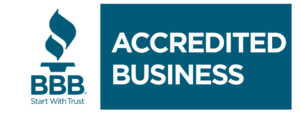Most Common Types of Bankruptcy
This past year’s double catastrophe (the pandemic and its subsequent economic impacts) have brought many people to the brink of financial disaster. Whether it is unanticipated medical expenses, loss of income, or a combination of other factors, you may be emerging from the COVID-19 disaster to discover just how dire your money situation is. If that’s the case and you are considering bankruptcy as an option, it’s important that you know what kinds of bankruptcy are open to you. This post will explore three of the most common types of bankruptcy open to individuals: Chapter 7, Chapter 13, and Chapter 12.
Chapter 7 Bankruptcy
Chapter 7 bankruptcy is also called Liquidation Bankruptcy, but don’t let that name scare you off. While it is designed to repay a portion of your debts through the sale of your assets, there are exemptions, and the experts at Burr Law can make sure your car and your home remain yours. The truth is that using exemptions to their fullest, you can derive the benefit of totally eliminating unsecured debt while retaining your most valuable possessions. There is no minimum or maximum amount of debt needed to file a Chapter 7 bankruptcy. There is an income status requirement, though. Your income needs to be equal to or below Wisconsin’s median income, $67,355 as of 2019 (the latest figures available).
Chapter 13
Chapter 13 bankruptcy functions more like a reorganization. A trustee assigned by the bankruptcy court draws up a plan whereby you repay a portion of your debts over the course of 3 to 5 years. Your creditors then need to agree to the plan, and the bankruptcy court approves it. With this type of bankruptcy, you will retain your car and your house as well. There is no income status requirement, though there is a maximum debt level. To be eligible to file for Chapter 13 bankruptcy, you must have less than $419,275 in unsecured debt, like credit cards or medical bills, and you also can have no more than $1,257,850 in secured debts, which includes mortgages and car loans.
Chapter 12
Chapter 12 bankruptcy is specifically designed for family farmers and family fishermen. It recognizes the greater debt burden that family farmers and fishermen carry but treats them more like individuals than business bankruptcies. The process is more streamlined and less expensive than Chapter 11, for instance. If you’re a farmer, in order to qualify for Chapter 12, your total debts must not exceed $4,153,150, and 50% of them must come from the farming operation. If you’re a fisherman, your total debts must not exceed $1,924,550, and 80% of them must be associated with your fishing enterprise. In both cases, more than 50% of your gross income should come from your farming or fishing. This bankruptcy pays off all or a portion of your debts over 3 years, though that can be extended to 5 years if necessary. You continue operating your farm or fishing business during the bankruptcy process.
These are the most common kinds of bankruptcy for individuals in Wisconsin. For businesses, other bankruptcy options apply. If you’re wondering how you’re going to resume your life after the pandemic, bankruptcy may give you a positive way forward. Consult the experts at Burr Law today to find out more.


